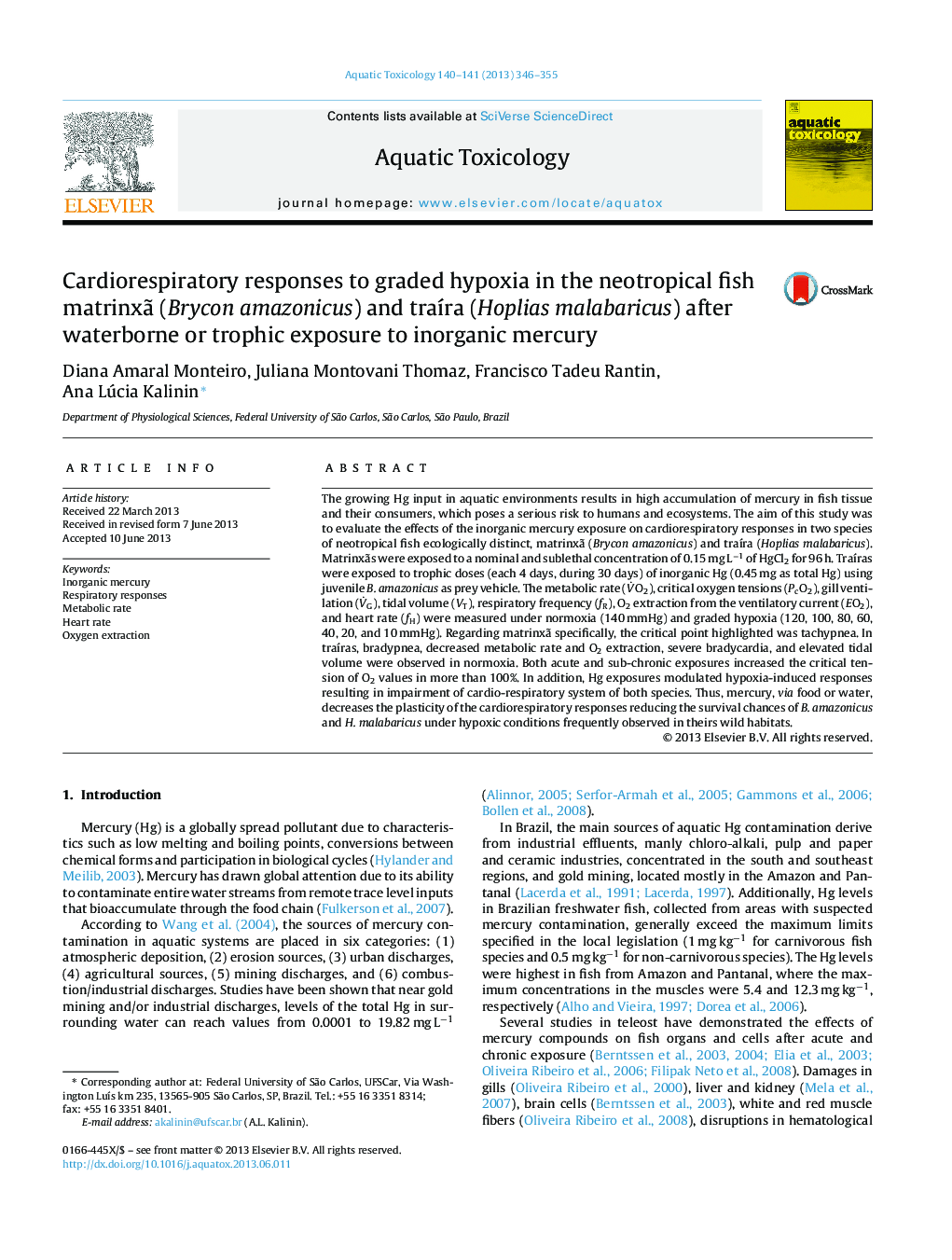| Article ID | Journal | Published Year | Pages | File Type |
|---|---|---|---|---|
| 6382551 | Aquatic Toxicology | 2013 | 10 Pages |
Abstract
The growing Hg input in aquatic environments results in high accumulation of mercury in fish tissue and their consumers, which poses a serious risk to humans and ecosystems. The aim of this study was to evaluate the effects of the inorganic mercury exposure on cardiorespiratory responses in two species of neotropical fish ecologically distinct, matrinxã (Brycon amazonicus) and traÃra (Hoplias malabaricus). Matrinxãs were exposed to a nominal and sublethal concentration of 0.15 mg Lâ1 of HgCl2 for 96 h. TraÃras were exposed to trophic doses (each 4 days, during 30 days) of inorganic Hg (0.45 mg as total Hg) using juvenile B. amazonicus as prey vehicle. The metabolic rate (VËO2), critical oxygen tensions (PcO2), gill ventilation (VËG), tidal volume (VT), respiratory frequency (fR), O2 extraction from the ventilatory current (EO2), and heart rate (fH) were measured under normoxia (140 mmHg) and graded hypoxia (120, 100, 80, 60, 40, 20, and 10 mmHg). Regarding matrinxã specifically, the critical point highlighted was tachypnea. In traÃras, bradypnea, decreased metabolic rate and O2 extraction, severe bradycardia, and elevated tidal volume were observed in normoxia. Both acute and sub-chronic exposures increased the critical tension of O2 values in more than 100%. In addition, Hg exposures modulated hypoxia-induced responses resulting in impairment of cardio-respiratory system of both species. Thus, mercury, via food or water, decreases the plasticity of the cardiorespiratory responses reducing the survival chances of B. amazonicus and H. malabaricus under hypoxic conditions frequently observed in theirs wild habitats.
Related Topics
Life Sciences
Agricultural and Biological Sciences
Aquatic Science
Authors
Diana Amaral Monteiro, Juliana Montovani Thomaz, Francisco Tadeu Rantin, Ana Lúcia Kalinin,
